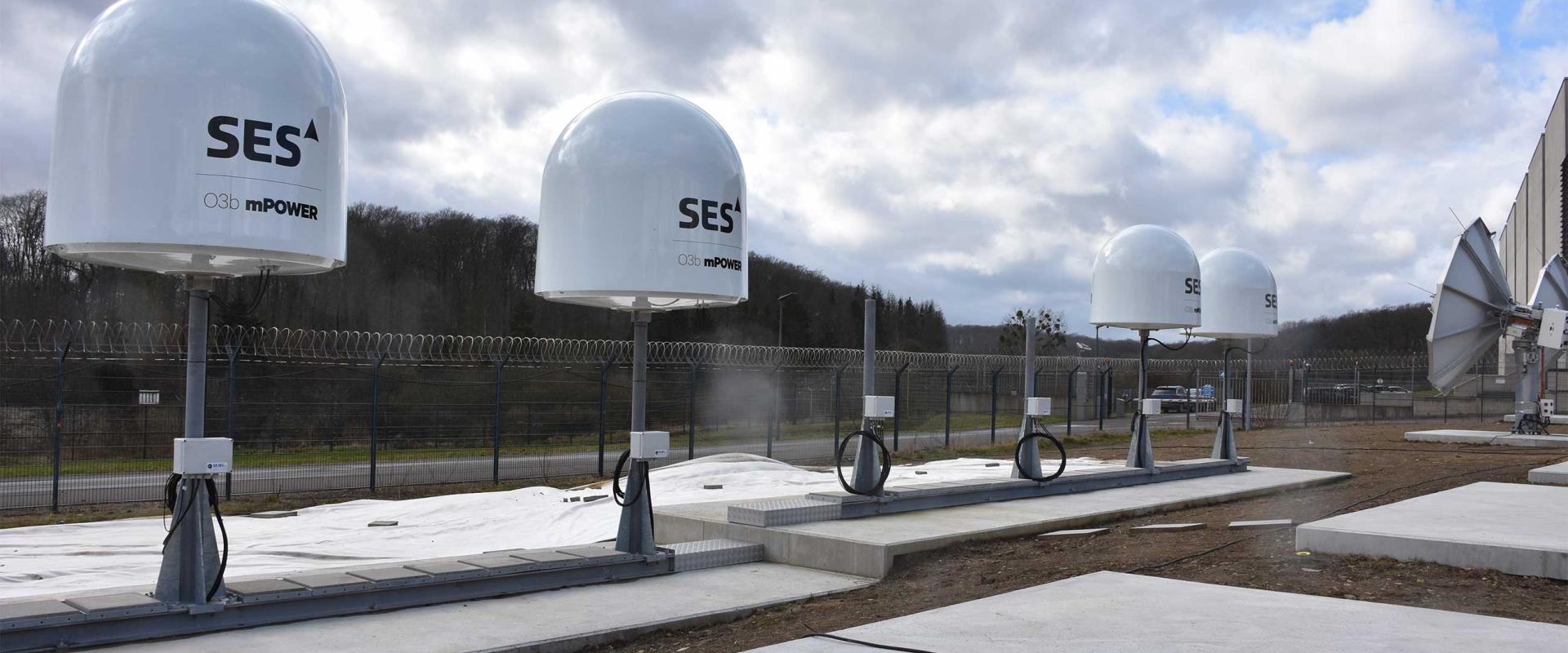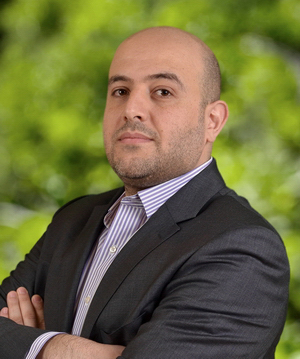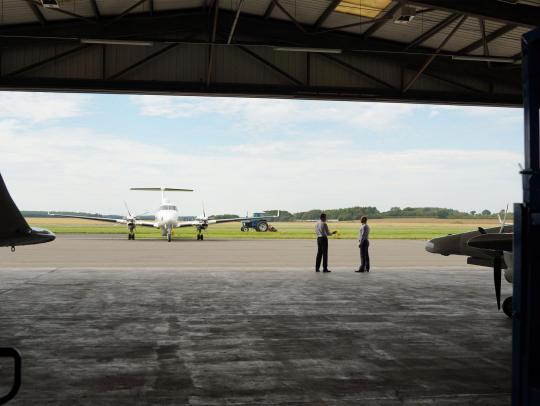Team Spotlight: New Cutting-Edge Antennas Unleash Access to O3b mPOWER

High-performance ground connectivity system can now be set up within hours, instead of days.

Antenna and Platform Development
As the launch of SES’s O3b mPOWER medium earth orbit (MEO) satellites approaches, the SES technology teams are busy testing a variety of integrated terminals, including gateway terminals from Intellian and Comtech, maritime antennas from Orbit, optical flat panels by Isotropic Systems, as well as other antennas from manufacturers like ViaSat, AvL and GetSat. These companies are co-developing antennas with SES to deliver a new level of interoperable communications capabilities across the O3b mPOWER system for customers in the enterprise, government and mobility industries.
Recent trials have also demonstrated the commercial readiness of specialised O3b mPOWER ground segment terminals that are interoperable for other bands and other non-geostationary satellite orbit (NGSO) systems. We sat down with SES’s Vice President of Antenna and Platform Development Saba Wehbe to get the latest on this new wave of terminals.
SES is making the O3b mPOWER service easily accessible to customers - how do you achieve this?
We are working closely with some of the best antenna developers in the world to standardise a variety of platforms on the O3b mPOWER network to serve customers in all key markets. The result is a diverse yet simple and standardised lineup of terminals designed ‘from the ground up’ to enable end users with increased choice and supply, flexibility and portability. The standard interfaces, application programming interfaces (APIs), and ecosystem approach allows everyone involved to benefit from it, and enables customers to easily scale their businesses with multi-orbit connectivity solutions.
For example, small flat panels from Isotropic and GetSat are designed specifically for government and defense sectors, maritime and mobility. Our commercial user terminals from Intellian and Orbit will be predominantly 1.2 metre terminals – half the size of the ones used for the first-generation MEO system. This will greatly reduce some associated costs such as shipping, installation and eventually scaling customer networks.
And while the flexibility, portability and affordability are unprecedented, that’s not all. The antenna systems we’re co-developing are easy for customers to manage and even install themselves, just in a matter of hours versus days on the traditional systems. And on top of this, they allow interoperability with other orbit regimes – this is absolutely revolutionary.
The level of standardisation we’re offering across the O3b mPOWER platform allows customers to purchase certified components of their choice, such as a modem Block Up converter (BUC) or Low Noise block (LNB) converter, and they will work seamlessly together. That opens up a lot of options to choose from, which mitigates issues such as equipment lead time and supply. Customers can simply buy standardised hardware they can use for GEO, MEO or third-party systems.
How are the antenna trials going?
They have been going really well and we are getting a lot of interest from new and existing O3b customers who are keen to learn more about O3b mPOWER-certified antennas and hardware as they contemplate MEO services expansion.
We have dedicated antenna facilities in Luxembourg and in the US that are used for modeling, testing and validating the performance of the terminals, including full ‘over the air’ testing, leveraging our operational MEO constellation. By simulating the throughput and capabilities of O3b mPOWER on our current O3b system, we can perform advanced testing and fully validate the ground segment in time for the system’s start of service.
How has a decade of operating the current MEO system contributed to the deployment of O3b mPOWER?
We’ve learned a lot from the early days of implementing the O3b network. At one point, we had to dismantle a user terminal to transport it on canoes via the Amazon River to a remote customer site. This and other similar experiences motivated us to develop smaller, user-friendly terminals that come fully integrated with everything already included in the system, coupled with a simple activation process. All the customer needs to do now is to connect power and Ethernet to get service. The antenna can automatically search for the satellites, acquire and track the signal and deliver reliable connectivity.
And we have recently put that to the test with a customer in the Cook Islands, who received one of our new terminals along with installation instructions. They were able to self-install and activate the antenna systems without the help of a trained technician or anyone from SES. The ability to simplify commissioning of these antennas is a game-changer.
What excites you most about the upcoming O3b mPOWER ground segment launch?
The new wave of standardisation and interoperability of the ground segment is unlocking a host of opportunities. We’re opening the way for wider adoption of multi-orbit, with both GEO and NGSOs as part of a software-defined network solution, actively optimising and routing traffic on each asset based on latency, throughput and resiliency requirements.
We’ve made huge strides in building multi-orbit, multi-frequency access platforms that we are now rolling out. Implemented on a cruise ship, the new O3b mPOWER cruise solution developed with Intellian and Gilat, will link with SES-17 in GEO while the ship is in the North Atlantic, then switch automatically to O3b or O3b mPOWER in the Caribbean, ensuring high-performance connectivity every step of the journey at sea.
Governments are also among the biggest winners of all as seen in the recent testing with GetSat where we demonstrated that the new O3b mPOWER terminals can support demanding bandwidth requirements of remotely piloted aircraft systems with small antennas. In another set of tests, we were able to demonstrate accessing MEO and GEO simultaneously from a single terminal with Isotropic.
They say the proof is in the pudding, and as we near the O3b mPOWER launch the pudding is proving to be very good. It may sound a bit counterintuitive but we’re working as a team with other players on the market, so that together we all succeed through developing the technology and standards.




